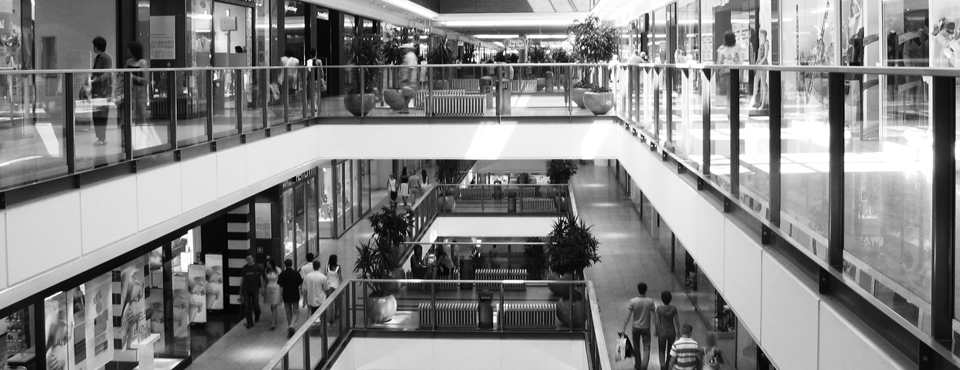
Why do shops cluster? Spatial competition and agglomeration in the Netherlands
By Ilias-Nikiforos Pasidis*
Retail markets constitute a large fraction of the economies of most modern economies and facilitate the distribution of final goods and services to consumers. However, economists have only paid limited attention to the retail sector and its unique characteristics. Only recently urban economists realised that the current growth of cities cannot be explained by the role of cities as centres of businesses and employment alone, suggesting that consumption amenities offered in a city are important determinants of the attractiveness of modern urban environments.
It seems that in general retail activities are clustered in city centres and secondary shopping centres. Does clustering of retailers imply larger profits or is this merely a result of urban planning? The master’s thesis Spatial Competition vs Spatial Agglomeration identifies and estimates the effect of being located close to other retailers of the same type on how much retailers pay for shopping space. This net effect is the outcome of two opposing effects that retailers take into account when they make their location decision. First, the agglomeration effect derives from the firm’s incentive to locate close to competitors in an attempt to capture more consumers. People often prefer to go to multiple shops, for example when trying out clothes, and therefore may prefer to go to concentrations of similar shops. Agglomeration may therefore imply higher retail profits and also higher rents. Counteracting this effect, however, is the competition effect, which means that locating close to competitors leads to greater price competition and therefore lower profits and rents. This competition effect depends on the possibilities to differentiate one’s products. For example, gasoline stations offer extremely homogeneous products and therefore compete intensely on prices, whereas a shoe shop may offer a wide array of different products and therefore price competition is less strong.
In the thesis it is is found that the effect that finally dominates is the agglomeration effect, or in other words, the effect of being located close to similar shops is on average positive for an average retailer. However, the effect of being located close to competitors is expected to differ between different types of retailers. For this reason, this effect was estimated for some selected sectors separately. The net effect of being located close to competitors was negative for supermarkets while for clothing and shoe shops the effect was positive. This result is in line with the idea that supermarkets offer a generally homogenous basket of products. Moreover, people usually do not go to multiple supermarkets, so the benefits of clustering are expected to be lower. On the other hand, shoe and clothing shops usually offer quite diverse products (for example, different market segments, brands, etc.) and people like to visit multiple shops to compare and try out clothing and shoes. Another important finding was that for a retailer located in a certain postcode area, there is a negative effect arising when retailers of the same type are located in neighbouring postcode areas. This could be interpreted as a sign that even though on average similar retailers benefit from being located close to each other, they tend to compete with other retailers of the same type located in other market areas in the vicinity.
These empirical findings have some implications for local policies. Municipalities in the Netherlands may stimulate the formation of retail clusters, as they may yield benefits for the retailers that decide to locate there and they may stimulate urban growth by promoting an urban area as a pole of shopping attractiveness. For example, large retailers that tend to locate on the urban fringe may be prompted to locate near other shops. As a result, all the similar retailers may enjoy the benefits of retail agglomeration. However, these recommendations should in no case be translated in a “one size fits all” policy. Retail clusters yield benefits for retailers only if there is a significant degree of product heterogeneity or product differentiation among similar retailers. In addition, it should be reminded that retail clusters in neighbouring areas tend to compete with each other. Therefore, a retail cluster of a specific type may be stimulated especially when there are no similar clusters in other neighbouring areas.
* Ilias-Nikiforos Pasidis is a PhD student in Economics at the Institute of Economics of Barcelona (IEB), University of Barcelona (UB). Ilias holds a bachelor’s and a master’s degree in Economic and Regional Development from Panteion University of Athens and a master degree in Spatial, Transport and Environmental Economics from VU University Amsterdam.
